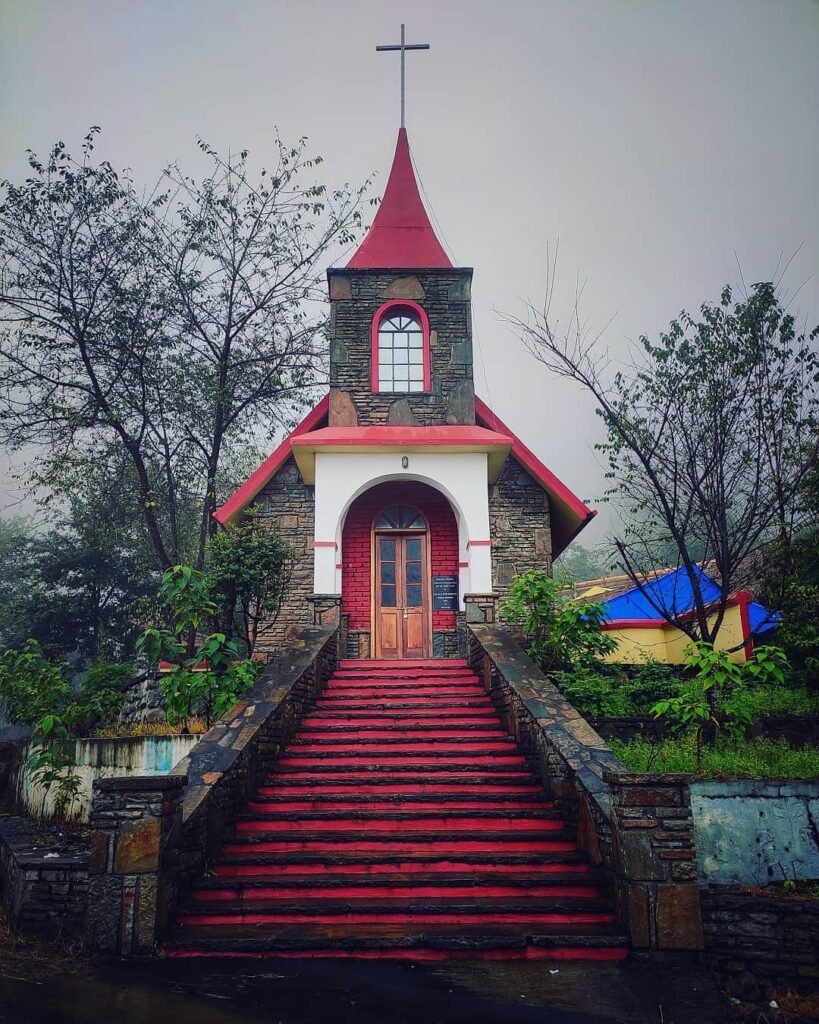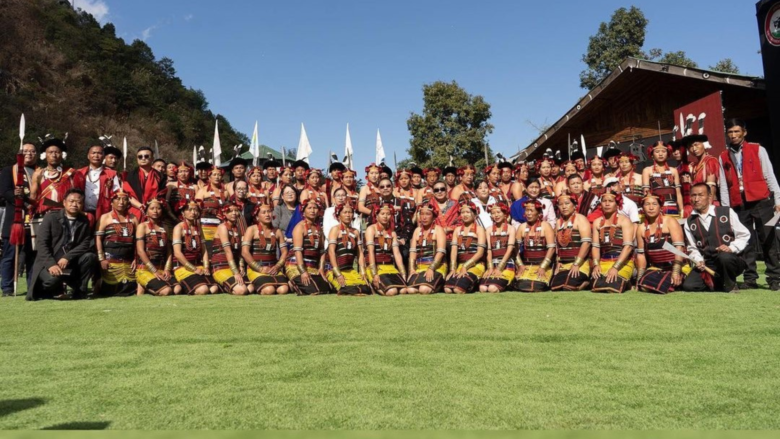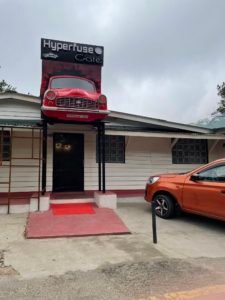Hornbill Festival is one of Nagaland’s largest, if not the largest, festivals. Nestled amidst the lush hills and verdant valleys of Northeast India lies the vibrant state of Nagaland, a land renowned for its rich cultural heritage and diverse tribal traditions. As the year draws to a close, Nagaland comes alive with a vibrant celebration of its cultural tapestry, the Hornbill Festival, held annually from December 1st to 10th in Kohima, the state capital.
Nagaland Hornbill Festival
The Hornbill Festival is a collective festival of Naga tribes showcasing their traditions. It is a festival of all forms and functions. If you are looking to explore Nagaland, the Hornbill Festival is the best opportunity.
Hornbill Festival: A Festival of Unity and Cultural Showcasing
The Hornbill Festival, named after the revered hornbill bird, a symbol of peace and prosperity in Naga folklore, originated in 2003 with a noble purpose – to bring together the diverse Naga tribes under one platform, fostering unity and understanding among them. Since its inception, the festival has transformed into a grand spectacle, attracting visitors from all corners of the globe, eager to immerse themselves in the heart of Naga culture.

A Journey Through Naga Traditions In Hornbill Festival
The Hornbill Festival’s unique concept sets it apart from other cultural celebrations. Each day of the ten-day festival is dedicated to a specific Naga tribe, allowing visitors to experience the distinct traditions, music, cuisine, and dance of each tribe. This immersive experience provides a fascinating glimpse into the rich tapestry of Naga culture.
Embarking on a Cultural Odyssey: Where and When
Dates and Location:
The Hornbill Festival unfolds its vibrant tapestry annually from December 1st to 10th in Kohima, Nagaland’s capital city. It is primarily held in the Naga Heritage Village near Kohima.
The Naga Heritage Village: Epicenter of Festivities:
At the foothills of Mount Japfü, the Naga Heritage Village serves as the epicenter of the Hornbill Festival. Here, traditional Naga houses, known as morungs, are constructed, each representing a specific tribe. These morungs showcase the tribe’s unique handicrafts, artifacts, and traditional attire, offering visitors a glimpse into Naga life.
Navigating the Naga Trails: How to Reach For Hornbill Festival
Air:
Kohima, the heart of the festivities, is well connected by air to major cities in India, including Delhi, Kolkata, Guwahati, and Imphal. The airport is in Dimapur, and you have to travel to Kohima by road for about 2-4 hours. The road is well-paved and well-connected.

Rail:
The Dimapur railway station, located about 74 kilometers from Kohima, serves as the nearest railhead. Similarly, you have to travel to Dimapur first and then opt for the road.
Road:
Kohima is accessible by road from all major towns and cities in Nagaland and neighboring states. Before coming, make sure you get your ILP pass, or you can get it there itself. If you have it already online, you won’t need to stand in the queue.
Click here to apply for ILP Nagaland online.
Hornbill Festival, A Haven for Culture and Comfort: Accommodation Options
Kohima offers a diverse range of accommodation options to suit different budgets and preferences. If you own a hotel, guesthouse or Naga cottages, and if you want to list your business here, send an email to us.
Hotels:
Kohima boasts a variety of hotels catering to travelers seeking a comfortable and convenient stay.
Guesthouses:
For a more intimate and homestay-like experience, guesthouses offer a chance to connect with local culture. Check here to book your flights and hotels from MakeMyTrip.com at the lowest possible prices.
Traditional Naga Cottages:
Immerse yourself in the spirit of Nagaland by staying in a traditional Naga cottage, providing a unique glimpse into Naga architecture and lifestyle.
Check out the full visual webstory on Hornbill Festival below or click here.
Beyond the Hornbill Festival: Unveiling Nagaland’s Treasures
Dzüko Valley: A Serene Escape
The Dzüko Valley, a picturesque haven located about 25 kilometers from Kohima, offers a tranquil retreat from the festival’s vibrant atmosphere. Known for its lush meadows, vibrant wildflowers, and serene lake, the valley is a popular destination for hiking, camping, and nature photography.
Check out the full webstory on Dzukou Valley, Manipur, below, or click here to check it out.
Japfü Peak: A Hike to Remember
Japfü Peak, the second highest point in Nagaland, rewards those who brave the moderately challenging trek with breathtaking panoramic views of the surrounding countryside.
A Culinary Adventure: Tantalizing Naga Delicacies
Smoked Pork with Bamboo Shoot:
A culinary highlight of the Hornbill Festival, Akhuni is a signature Naga dish featuring smoked pork cooked with bamboo shoots. The traditional smoking process imparts a unique flavor to the pork, making Akhuni a must-try for food enthusiasts.
Rice Beer (Zutho):
Zutho, a traditional Naga beverage, is an integral part of Naga celebrations. Made from fermented rice, it has a slightly sour taste and is an acquired taste for many visitors.
Immortalizing Memories: Capturing the Essence of Hornbill
A Photographic Journey
The Hornbill Festival is a photographer’s paradise, offering a kaleidoscope of colors, traditional attire, and dynamic performances. Whether you’re a seasoned photographer or an enthusiast, the festival provides ample opportunities to capture stunning images that will forever preserve the essence of this unique cultural celebration.
Tips for Capturing the Essence of Hornbill
- Embrace the Vibrant Colors: The Hornbill Festival is a riot of colors, from the vibrant traditional attire of the Naga tribes to the colorful decorations adorning the morungs and festival grounds.
Use your camera to capture the interplay of these colors, creating visually arresting images that reflect the festival’s vibrant spirit. - Seek Out Authentic Moments: Move beyond the main stage and venture into the heart of the festival to capture candid moments of interaction, celebration, and cultural exchange. These authentic moments will tell a deeper story, capturing the essence of the festival and the people who bring it to life.
- Explore Diverse Perspectives: Don’t limit yourself to capturing just the grand spectacle. Use your camera to explore the diverse perspectives of the festival, from the faces of the performers to the hands of the artisans creating intricate handicrafts. These intimate details will add depth and richness to your photographic narrative.
- Capture the Rhythm of the Festival: The Hornbill Festival is a celebration of music and dance. Use your camera to capture the rhythm of the festival, from the energetic beats of traditional drums to the graceful movements of Naga dancers. These dynamic images will evoke the energy and excitement of the celebration.
- Embrace the Light and Shadow: The Naga Heritage Village, with its traditional morungs and lush natural surroundings, offers a variety of lighting conditions for photography. Experiment with light and shadow to create dramatic and evocative images that capture the essence of the festival’s setting.
Preserving Your Memories During Hornbill Festival
The Hornbill Festival is a fleeting experience, but your photographs will serve as enduring reminders of this unique cultural immersion. Take care of your equipment, back up your photos regularly, and consider creating a photo album or digital presentation to showcase your work and share your experience with others.
The Hornbill Festival is a transformative journey into the heart of Naga culture, offering a captivating blend of traditions, music, cuisine, and dance. Embark on this cultural odyssey, capture the essence of the festival through photography, and preserve the memories of an unforgettable experience. Let the vibrant colors, dynamic performances, and authentic moments of interaction become a permanent part of your photographic narrative, forever capturing the spirit of the Hornbill Festival, a celebration of unity, diversity, and the rich cultural heritage of Nagaland.





